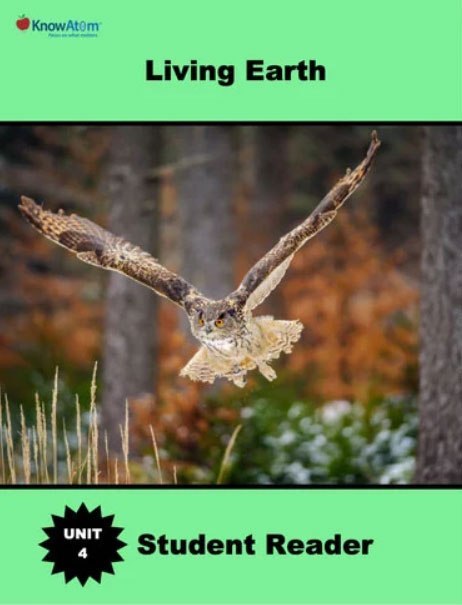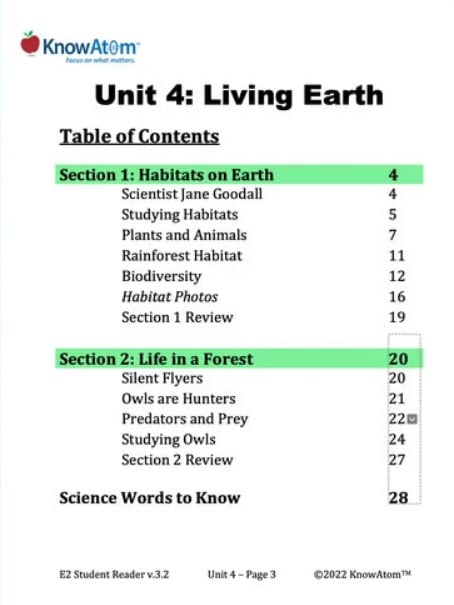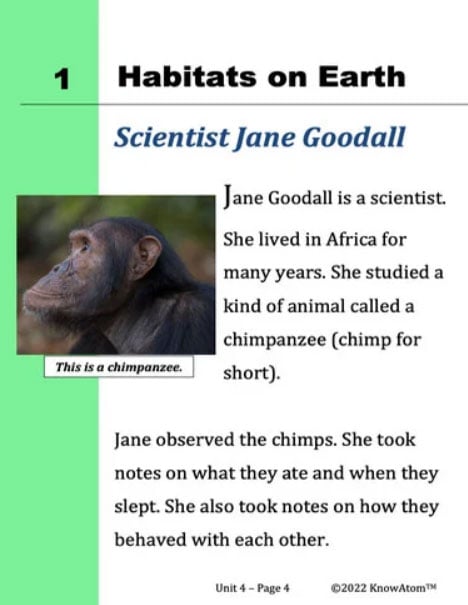In this lesson, students take part in and observe a classroom model of a predator-prey relationship between foxes and rabbits in a forest habitat. Students then dissect owl pellets to identify and analyze common prey animals of a barn owl.
This unit has students exploring animal habitat and predator-prey relationships. Once students model the living and nonliving parts of different habitats, they focus on how living things depend on other living things in their habitat for survival. As a class, students model the predator-prey relationship between foxes and rabbits in a forest habitat, and then dissect owl pellets to analyze a barn owl’s diet. This page highlights each key component of this lesson.
The science background section provides teachers with more in-depth information of the science phenomena being studied in this unit which has students exploring animal habitats and predator-prey relationships.
The word “predator” is generally used to mean an animal that eats other animals. The relationship between plant-eating animals and their prey, however, works the same way. One example is the relationship between the prickly pear cactus and its predator, the cactus moth. The South American cactus became a widespread nuisance in Australia, making large areas of farmland unusable. When the moth was introduced, it rapidly brought the cactus population under control by eating the cacti.
Both predators and prey rely on their senses to survive, and have specific body parts that help them do this. Senses are ways that organisms gather information about the outside world. Senses include sight, hearing, smell, taste, and touch. For example, owls are nocturnal predators with a highly developed sense of sight. They have large eyes that are specially designed to see in the dark. They also have powerful talons and sharp beaks that help them catch and kill prey.
Owls cannot chew their food. Mice, chipmunks, voles, and other prey are swallowed whole. The animals travel down the bird’s throat and directly into its digestive system. The owl’s stomach has two parts. The first produces acids and mucus that break down food. The second part, called the gizzard, is a filter that holds back items such as bones, fur, teeth, and feathers. These items are compressed into a pellet the same shape as the gizzard. When the owl eats more than one prey animal within several hours, the various remains are packed into one pellet. This pellet then travels up and is regurgitated about 20 hours after the owl has eaten. When an owl is about to produce a pellet, it will take on a pained expression. It will close its eyes and find a place to land. At the moment of expulsion, the owl’s neck stretches up and forward, its beak opens, and the pellet drops out.
In this lesson, students take part in and observe a classroom model of a predator-prey relationship between foxes and rabbits in a forest habitat. Students then dissect owl pellets to identify and analyze common prey animals of a barn owl.

Prepared hands-on materials, full year grade-specific curriculum, and personalized live professional development designed to support mastery of current state science standards.
Animal: a living thing that needs to eat other living things for energy, breathes in oxygen, and undergoes growth and reproduction
Biodiversity: the different kinds of living things in the world or in a particular habitat
Habitat: a place where life grows; provides plants and animals with clean water, air, food, and shelter
Living: anything that breathes, needs energy, food and water, grows, moves, and reproduces
Nonliving – anything that does not meet, and has never met, all of the requirements of life
Plant: a living thing that makes food from sunlight
Predator: a living thing that eats other living things
Prey: a living thing that gets eaten by another living thing

Silent Flyers
When it begins to get dark out, many kinds of owls wake up. They begin to fly. When owls fly, they are very quiet. They can fly close to another animal without being heard.
Owls are Hunters
Owls fly around looking for food. Owls are animals. They need to eat other living things for energy and nutrients. All animals get the food they need from their habitat.
Owls eat other animals. Living things that eat other living things are predators. Most owls eat insects and small animals called rodents. Mice, moles, and voles are all rodents. These rodents are prey. Prey are animals that get eaten by other animals.


Predators and Prey
Both predators and prey rely on their senses to survive. Senses are ways that organisms gather information about the outside world.
Owls have good eyesight in the dark. They have good hearing. They can hear the movement of other animals on the ground or in the trees.
For the first part of this lesson, students participate in a simulation that models the relationship between foxes (predator animals) and rabbits (prey animals) in a forest habitat over several seasons. Students use their observations from their hands-on model to construct an explanation for how living things interact with and depend on other living things in their habitat for survival. In the second part, students investigate a barn owl’s diet by analyzing owl pellets to build an explanation about what the owl has eaten.
KnowAtom incorporates formative and summative assessments designed to make students thinking visible for deeper student-centered learning.

Standards citation: NGSS Lead States. 2013. Next Generation Science Standards: For States, By States. Washington, DC: The National Academies Press. Neither WestEd nor the lead states and partners that developed the Next Generation Science Standards were involved in the production of this product, and do not endorse it.